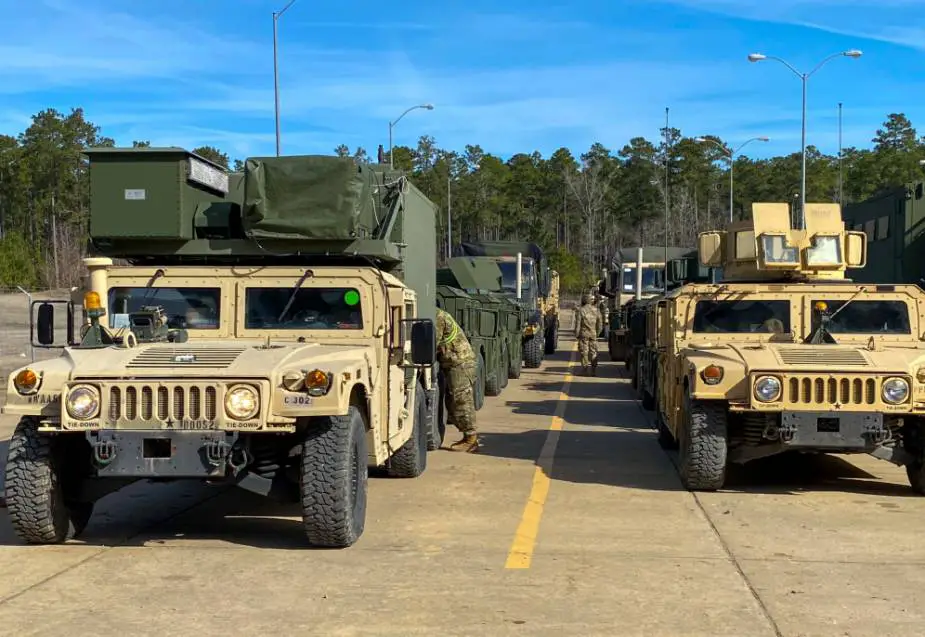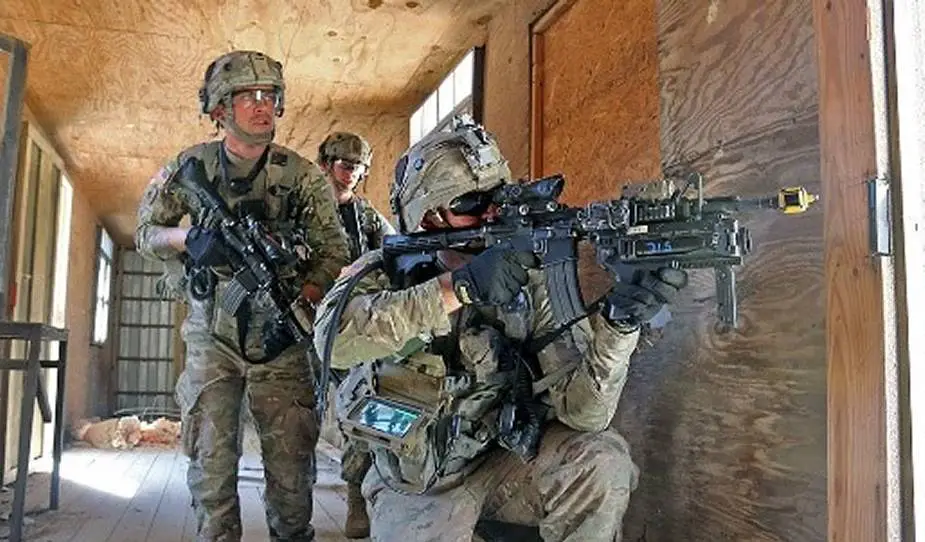U.S. paratroopers assigned to the 3rd Brigade Combat Team, 82nd Airborne Division received Multiple Integrated Laser Engagement System (MILES) before rotation 21-04 at the Joint Readiness Training Center on Fort Polk, Louisiana on January 28.
Follow Army Recognition on Google News at this link

Paratroopers assigned to the 3rd Brigade Combat Team, 82nd Airborne Division wait to install Multiple Integrated Laser Engagement System (MILES) prior rotation 21-04 at the Joint Readiness Training Center on Fort Polk, Jan. 28, 2021 (Picture source: Staff Sgt. Jeremy Bennett/82nd Airborne Division)
The rotation serves to enhance the brigade and their supporting unit's deployment readiness since the assumption of responsibility as the Army's Immediate Response Force in December 2020.
The multiple integrated laser engagement system, or MILES, is used by the U.S. Army and other armed forces around the world for training purposes. It uses lasers and blank cartridges to simulate actual battle. Individual soldiers carry small laser sensors scattered over their bodies, which detect when the soldier has been illuminated by a firearm's laser. Each laser transmitter is set to mimic the effective range of the weapon on which it is used. When a person is "hit", a medic can use the digital readout to determine which first aid method to practice.
Different versions of MILES systems are available to both US and international militaries. The capabilities of the individual systems can vary significantly but in general all modern systems carry information about the shooter, weapon and ammunition in the laser. When this information is received by the target, the target's MILES system uses a random number roll and a casualty probability lookup table to determine the outcome. For example, a MILES transmitter emulating an M16 rifle cannot harm an armored personnel carrier (APC), but could still "kill" a commander visible in the hatch of the vehicle.
Vehicles are typically outfitted with a belt of laser sensors or individual wireless detectors. Dismounted soldiers often wear a vest or harness with sensors as well as a "halo" of sensors on their helmets. MILES systems can be coupled with a real-time data link allowing position and event data to be transmitted back to a central site for data collection and display. More sophisticated systems for tanks and APCs exist that use various techniques (including scanning lasers and coupled radio systems) to allow more precise targeting of armored vehicles. The standard is maintained by the U.S. Army's PEO-STRI branch.

Instrumentable-Multiple Integrated Laser Engagement System Individual Weapon System 2 (I-MILES IWS 2) - Simulate both the firing capabilities and the vulnerability of soldiers as well as a means to objectively assess weapon effects during training; to provide unit commanders an integrated training system for use at Home Station and Combat Training Centers (Picture source: U.S. Army)















